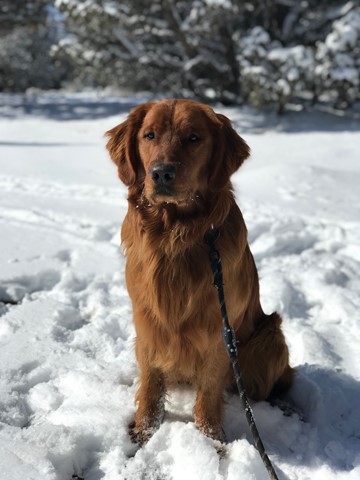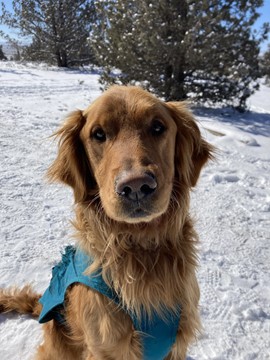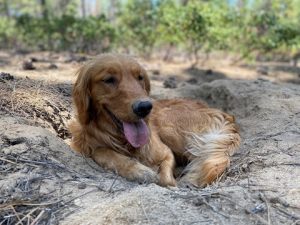Canine Therapy
“Canine Therapy uses dogs to promote health and healing. Like other animals, dogs are accepting, comforting and non-judgmental, making them ideal therapy companions.”
At Deschutes Wilderness, our canine therapy program uses Golden Retrievers very strategically to teach our students how to work on healthy relationships with the ultimate goal being transferable attachment. Transferable attachment is practicing relationship tools with the canines and then transferring those skills learned to healthy human relationships. The unconditional love and loyalty that canines provide make them the perfect animal to work with when practicing safe relationships.
When coming to Deschutes Wilderness, students are gradually introduced into the canine program with the initial focus being on their own safety and self-care. During this time they are encouraged to participate in canine activities and are able to interact daily. Once students are ready, they are able to take on the role of canine caregiver. As the canine caregiver, they are responsible for practicing our CASA model which stands for commitment, acceptance, security, and attunement.
Research suggests that through caring for and interacting with a dog, there can be many benefits, including:
- Decreased stress
- Increased physical activity and healthy play
- Relief from anxiety and depression
- Increased focus and attention through experiential learning
- Improved communication and social skills
- Learning appropriate ways to treat self and others
- Unconditional love, affection, nurturing and empathy
- Increased self-esteem and feelings of empowerment
- Reduced blood pressure
- Elevated mood
- Raised levels of oxytocin
- Reduced loneliness and bigger sense of purpose
- Setting and respecting boundaries
- Motivation to stay in treatment and participate fully in therapy
-CRC Health Group




